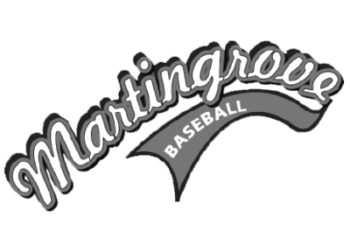Five Characteristics of a Great Umpire
When young umpires get started in the game, the focus of most in trying to improve their craft is to master the mechanics of good umpiring. The self-talk that goes on inside the umpire’s head goes like this:
“a good umpire is always in position, anticipating the proper rotation and finding the best angles to see approaching plays. I’ll be judged on whether I have a consistent strike zone. Keep my head height the same, track the ball with my eyes to the mitt and remember to have good timing. Let the play happen, see the play. What is it? Now call it”
That kind of self-talk is essential to the development of an umpire. However, with experience, those concepts begin to become ingrained. That’s when the focus needs to shift. There are a lot of good umpires who can get the calls right and follow all the prescribed mechanics of good umpiring. An umpire who ‘wants to advance his or her career needs to realize what characteristics separate the best umpires from the rest. Most of those great umpires display qualities that go beyond calling balls and strikes or safes and outs.
With that in mind, let’s take a look at some of the traits that great umpire possess.
Presence
One of the most important characteristics is presence. Like a lot of the intangibles of good umpiring, it is a quality that is a little hard to define. It starts with looking the part Appearance, as it relates to good physical form and a sharp uniform, is a part of that However, it goes further. How an umpire stands on the field prior to the start of the game and between innings, shoulders upright with head held high, never folding the arms in front of the body, gives an air of confidence and approachability that is noticed by players and coaches.
Base umpires who are in a good athletic position at the time of each pitch display a strong presence. Presence
involves looking people in the eye while communicating with them. It also involves keeping your cool in the middle
of a visit from an angry coach with the crowd calling for your head from the stands.
Grace under fire
Related to the last point is grace under fire combined with loyalty to your partners. We all want to work with the kind of partner who is easy to find when problems arise on the diamond. Most of us have been in situations where we needed to get help from our partners on a rules situation, or to get more information on a call that might need to be overturned. Great umpires step up in those situations and show the courage that is needed to provide the required help. They also don’t throw their partners under the bus during the ensuing argument.
Discernment
Discernment involves things like knowing when to let a complaint go and when to address it. Umpires need to know where that line is drawn. The situation in the game, who is making the complaint, how the complaint is lodged, tone of voice, etc., are all factors that go into making that judgment. Another degree of discernment involves how and when selling a call is in order. Not every close call needs to be sold with the same degree of intensity. Umpires don’t like to be shown up by players, and players feel the same way regarding umpires. For example, a hard sell on a strike three call when the batter is obviously fooled by a pitch down the middle won’t win you many friends for the remainder of the game.
Awareness
There are a lot of things that can go on during a baseball game that aren’t necessarily a part of the game of baseball. Nonetheless, they fall under the jurisdiction of umpires. Usually, those issues involve sportsmanship, and umpire
awareness of what is going on is necessary for keeping order on the diamond.
Keeping a close eye on the behavior of players might mean taking your eyes momentarily off the ball. A player who just hit a home run might decide to make some gesture directed toward the opposing team’s dugout while rounding the bases. Or the player may decide to stand and admire the flight of the ball for a while before running the bases. An umpire who has great awareness will recognize that and address it with that player. A base umpire who sees something similar will let the plate umpire know about it between innings.
Consequently, the next time that hitter is up, if a pitch comes in under his chin, the umpire will be prepared to deal
with it properly. Or similarly, after an unnecessarily hard slide on the bases, or a hard tag that was uncalled for, awareness of who the perpetrator was will allow the plate umpire to attempt some preventive officiating. When the guilty party gets ready to hit next time, the plate umpire can inform the pitcher that throwing at the hitter won’t be tolerated. Those situations can be dealt with much more effectively when the plate umpire is prepared for them.
Style
With all of those positive traits, an umpire may still not rise above the rest if he doesn’t have a sense of his own style in making calls. Style doesn’t mean putting on a show. However, how you look when making calls sometimes has as much to do with how you are judged than whether you got the call right or not. That is true of casual obvious calls, as well as those you have to sell with enthusiasm. Umpires who look like a robot or mechanical doll when making calls are usually subject to harsher judgment from players, coaches and fans. Many umpiring clinicians suggest making calls in front of the mirror to see how you look in an attempt to find your own personal style.
